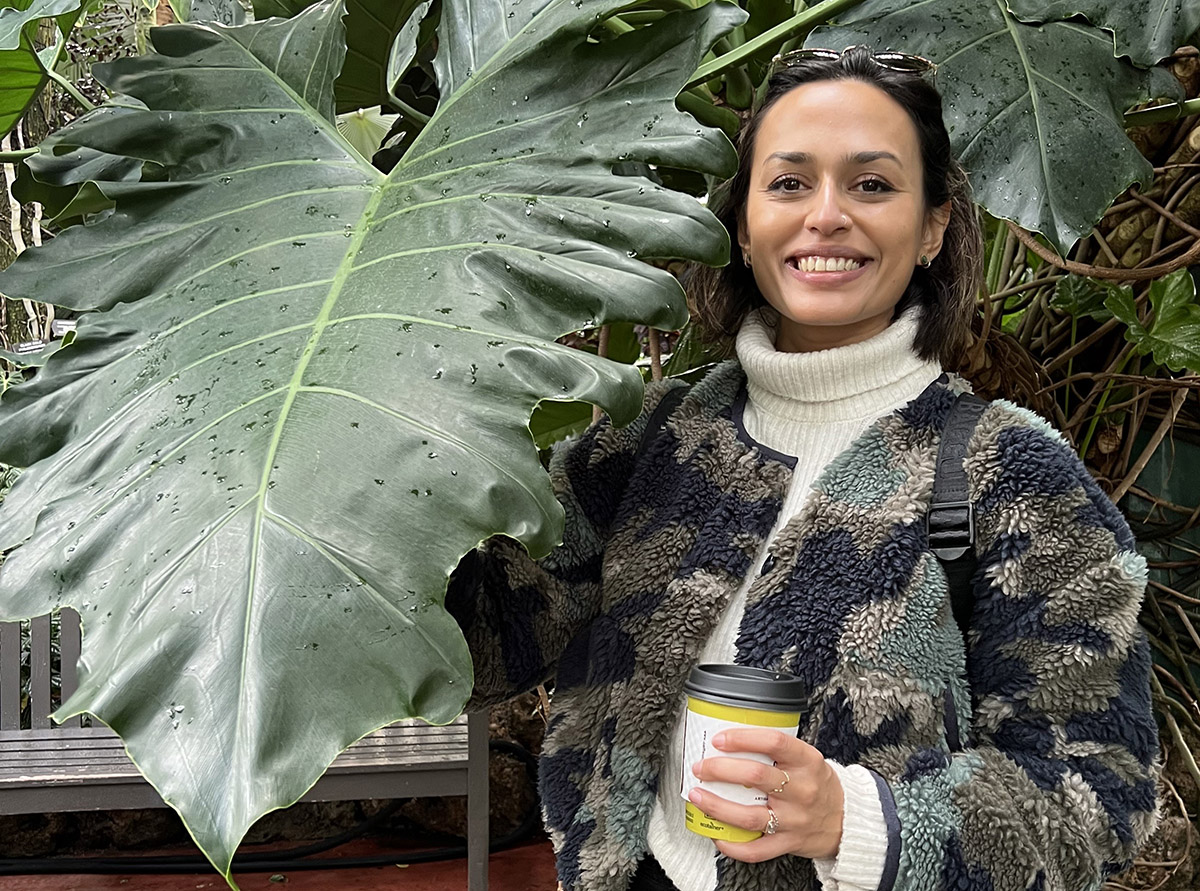Perspectives: Isra Fakhruddin

Isra Fakhruddin is a Designer at Hoerr Schaudt in Chicago, Illinois.
MARCH 20, 2024
Tell us about yourself.
I'm from Pakistan, but I was born and raised in Bahrain until I was 12. In 2001, my family and I immigrated to the United States and settled in the northwest suburbs of Illinois. I traveled a lot throughout my childhood, which exposed me to a lot of different customs, cultures, languages, landscapes, and traditions.
My family has been a significant source of inspiration throughout my life, especially my dad. He’s been a prominent leader in community service, where he has used the power of art and music as tools to raise awareness about social issues that he cares about.
Educationally, I have an undergraduate degree in fine art and art history from DePaul University in Chicago and two master’s degrees from the University of Colorado: one in landscape architecture and the other in urban planning.
You came to landscape architecture after starting a career in the arts. What led you to go back to school and make that career shift?
Having lived in the Middle East and traveled a lot growing up, I’ve always been drawn to social issues and global affairs. So, in college, I sought out student groups and also volunteered at several organizations. I joined Students for Justice in Palestine at DePaul University. I became involved in Youth and Immigration Services as a volunteer with a refugee organization in Chicago called RefugeOne, tutoring young students and assisting newly arrived families with housing and job placement. I also participated in various activist events, like an arts festival curated by a local artist in Chicago that examined human rights abuses during the Iraq war.
After undergrad, I spent the next eight years trying to figure out who I was, working different types of jobs in the art gallery, events, and marketing space. Eventually, I ended up working as an office and marketing manager at Wettling Architects, a high-end residential architecture firm in New York. That firm worked very closely with Ed Hollander Landscape Architects on their projects, and that was my introduction to the discipline. I saw that the field has a correlation with the arts and social justice advocacy, and that’s how I decided to become a landscape architect. I've now been in the discipline since 2018.

How does your background shape your work?
Over the years, I’ve become more and more interested in things pertaining to food and land sovereignty, environmental and climate advocacy, mobility justice, and disability justice. These interests come from what I've seen, the people I've spoken to, the communities that I've worked with, and stories from my own family. For example, my dad's side faced displacement during the Bangladesh War of Independence in 1971. That all has shaped how I perceive, not only my personal life, but also this profession.
Looking at these themes, I saw how landscape architecture, urban planning, architecture, and urban design have been used or co-opted as tools for colonial interests and the disenfranchisement of certain communities. It’s important to keep those conversations at the forefront of our profession. There's something to be said about recognizing the positive aspects of our profession, but also acknowledging where we fall short. So, when I look at landscape architecture and I look at my personal experiences, I see an ongoing learning opportunity. How can I reflect on my own background and bring it to the profession? And how can the profession inspire me and support me in return?
You’ve been a volunteer and advocate for global issues. Do you think there’s a role for landscape architecture in this work?
Definitely. I think the profession has made great strides in attracting people to the field because of its passion for environmental stewardship. We advocate for social, cultural, and environmental justice. We use the field to advance education, foster knowledge, and advocate for public health, public experiences, and well-being. This is an industry I'm very passionate about, and I hold a lot of respect for it. And because of that, it’s important to me that the field acknowledges current global issues and addresses them head-on.
For example, over the past six months. we've been seeing devastation and destruction in Palestine. Civilians in Gaza are experiencing famine and starvation. We're seeing both displacement and erasure of indigenous populations, homes and hospitals being razed, and demolition of public infrastructure as well as cultural amenities like universities, libraries, and community centers. There are many examples that tie directly to our field and that should resonate with us as designers. We position ourselves as pioneers of climate, environment, culture, and the well-being of people and communities, yet there is ecocide, urbicide, domicide, and cultural genocide happening right now in Gaza and the West Bank. Farmlands, agricultural systems, olive groves, fishing fleets—we’re seeing catastrophic loss to the natural environment and ecological systems that will have lasting effects on the climate crisis.
What kind of impact do you think landscape architects can and should be having on the world?
The great thing about this profession is its versatility. Whether it's through research, teaching, actual design work, analysis, or management—there are many ways to have an impact, and I think it's important to be curious and lean into all the different avenues if you can because it helps increase your knowledge and awareness on how the field can serve the public.
I'm curious about the power that landscape architecture can have within the public realm. I think our profession can sometimes be misunderstood, and I do think we're making an impact; however, I believe landscape architects can have a much bigger influence on the world by prioritizing and speaking on current global issues and acknowledging our role in settler colonial spatial practices and how it ties into design and the built and natural environment.
What are your professional hopes and goals for the future?
I currently work at Hoerr Schaudt in Chicago. I’ve been with them for two years, and it’s allowed for a lot of professional growth. I’ve worked on public projects and I'm starting to do more project management, taking on larger-scale projects, and assisting with business development efforts. My experience so far has been very rewarding. I also really love the research and educational aspects of landscape architecture and how, beyond designing, we can tell stories and respond to the voices of communities. I'm really looking forward to finding ways to be involved in that as well. I’m still learning a lot and evolving, but looking forward to where this will all take me down the road.
I'm just one of many designers, researchers, and advocates who want to uplift and share the stories of people who may not have the means or the capacity to do so themselves. And I'm looking forward to continuing that in whatever ways I can, whether it’s through social media, interviews, or any other opportunities to raise awareness about how current events are relevant to our field.
LAF's Perspectives interview series showcases landscape architects from diverse backgrounds and identities discussing how they came to the profession and where they see it heading. Any opinions expressed in this interview belong solely to the author. Their inclusion in this article does not reflect endorsement by LAF. This interview has been edited for length and clarity.
To stay up to date on future Perspectives articles, as well as LAF programs, events, and funding opportunities, subscribe to LAF emails.











